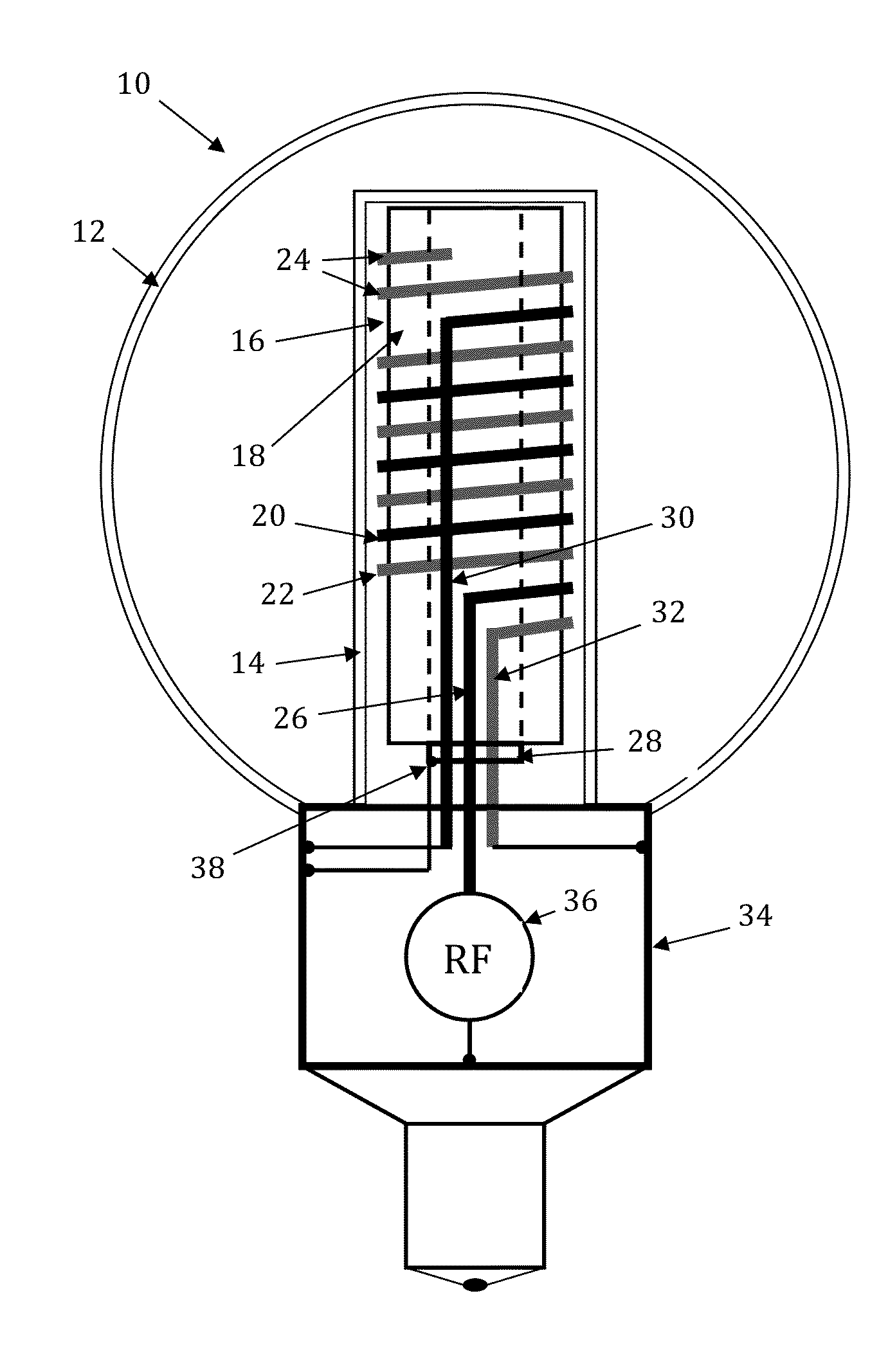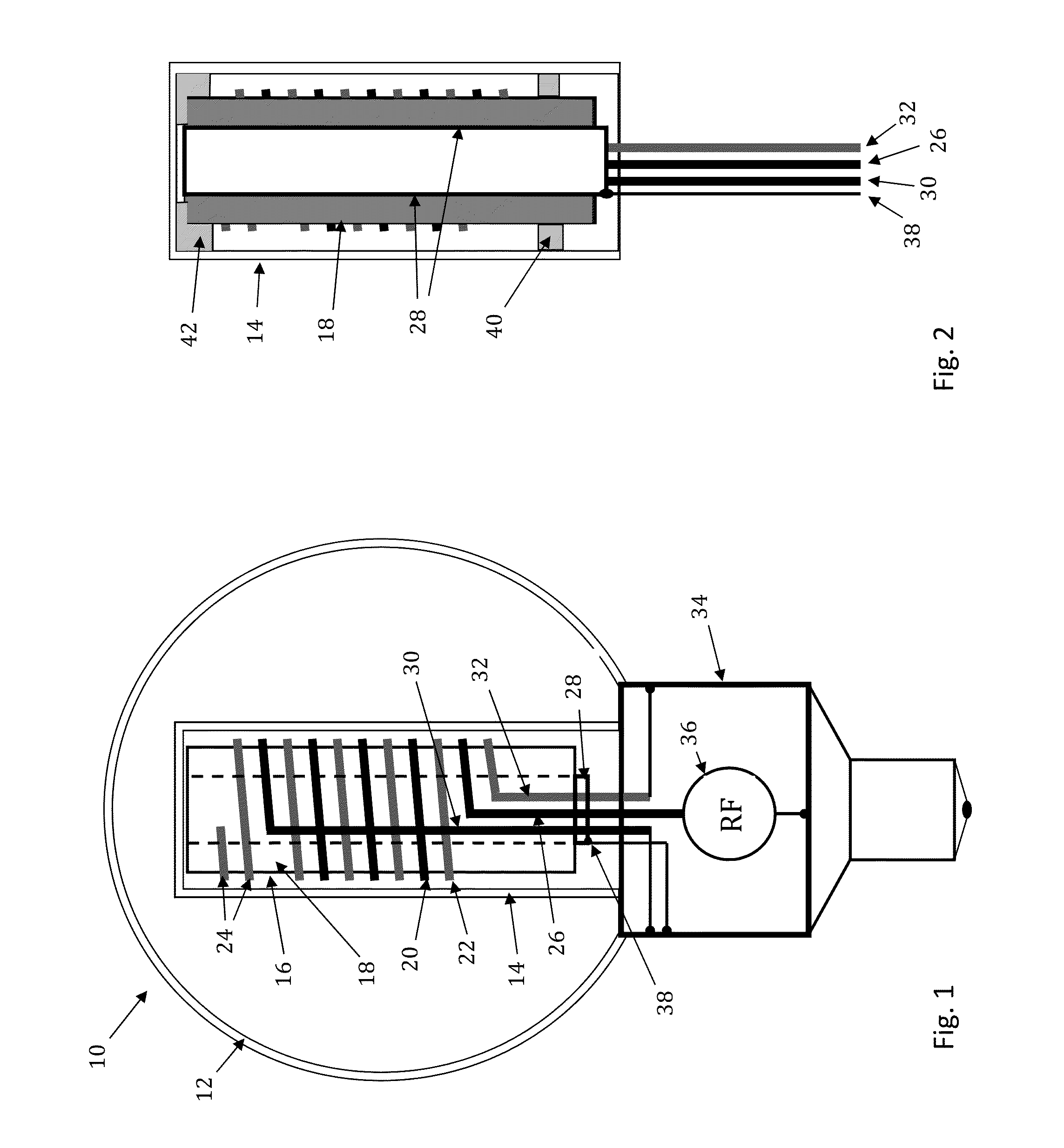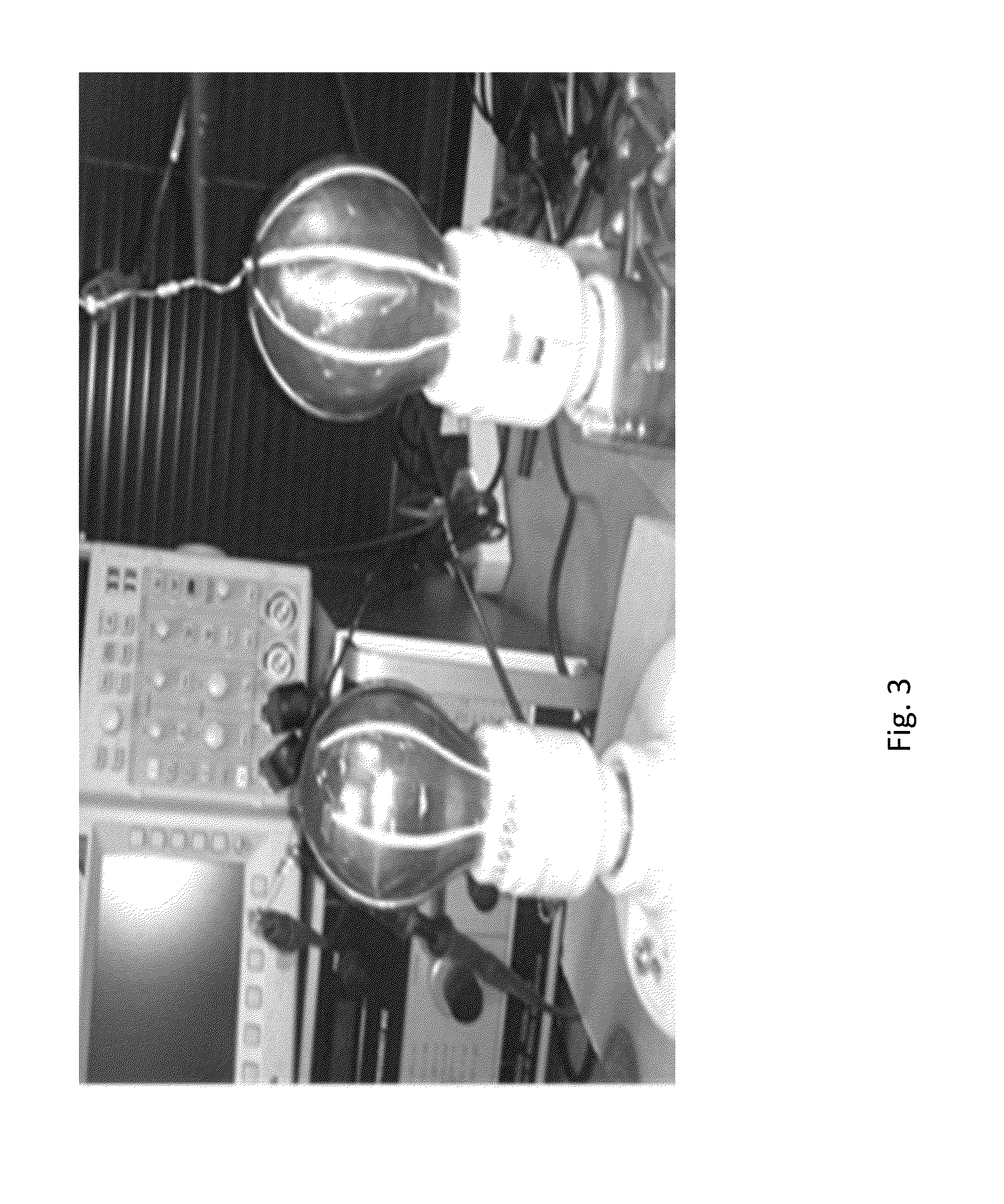RF induction lamp with reduced electromagnetic interference
a technology of electromagnetic interference and induction lamp, which is applied in the direction of transit tube circuit elements, cathode-ray/electron beam tube circuit elements, structural circuit elements, etc., can solve the problems of emi compliance, limited emi, and inflicted by any industrial and consumer product utilizing rf power, so as to reduce the conductive electromagnetic interference (emi) level. , the effect of simple and low cos
- Summary
- Abstract
- Description
- Claims
- Application Information
AI Technical Summary
Benefits of technology
Problems solved by technology
Method used
Image
Examples
Embodiment Construction
[0032]FIG. 1 illustrates a cross-section view of an inductive RF lamp in accordance with an exemplary and non-limiting embodiment. The RF lamp 10 comprises of a glass envelope 12 with a glass re-entrant cavity 14 sealed into the envelope 12 and forming a gas discharge vessel (burner) between them. The lamp burner is filled with a working gas mixture of a noble gas such as Argon, Krypton or others and Mercury vapor. The inner surface of burner, both the envelope 12 and the re-entrant cavity 14, are covered with a phosphor. With plasma discharge maintained in the burner, the UV radiation from plasma excites the phosphor, which converts UV light to visible light.
[0033]The plasma within the burner is maintained by the electromagnetic induction created by the RF lamp coupler 16 sitting inside the re-entrant cavity 14. The coupler 16 is energized by an RF power source (RF ballast) 36 placed in the ballast cap 34 and electrically connected to the local ground (buss), where the ballast cap ...
PUM
 Login to View More
Login to View More Abstract
Description
Claims
Application Information
 Login to View More
Login to View More - R&D
- Intellectual Property
- Life Sciences
- Materials
- Tech Scout
- Unparalleled Data Quality
- Higher Quality Content
- 60% Fewer Hallucinations
Browse by: Latest US Patents, China's latest patents, Technical Efficacy Thesaurus, Application Domain, Technology Topic, Popular Technical Reports.
© 2025 PatSnap. All rights reserved.Legal|Privacy policy|Modern Slavery Act Transparency Statement|Sitemap|About US| Contact US: help@patsnap.com



